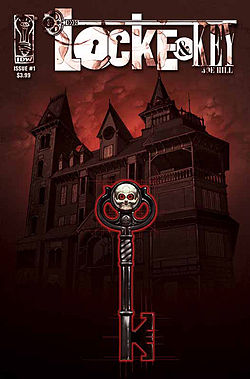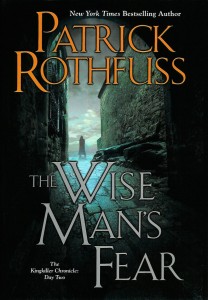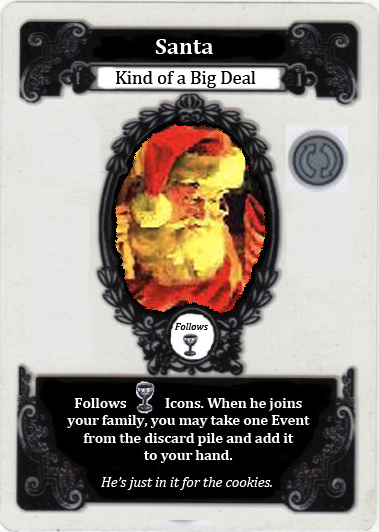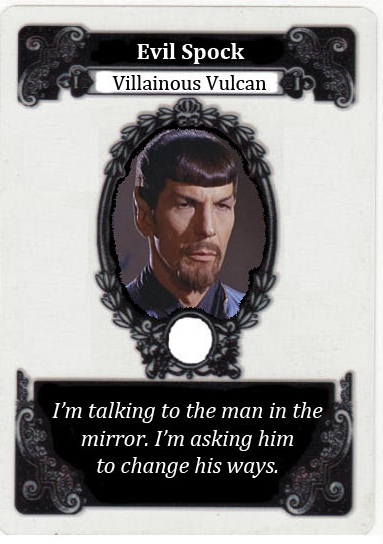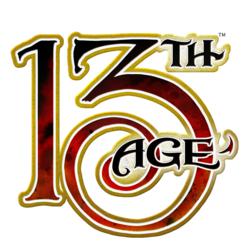I’ve just returned from a trip to LA, where I tested Phoenix out on a group of friends. Most of the survived the experience. I’m going to write more about Phoenix later in the week, but I thought I’d tell you where I’m going to be in the next few weeks so you have a chance to see it for yourself. Let me know if you’ll be at any of these!
Friday, October 4th – Sunday, October 6th I’ll be at GENRECON in Guelph, Ontario. Friday night I’ll be playing Gloom & showing off the new expansion, Unquiet Dead. Saturday I’ll be running Eberron, playtesting Phoenix, and taking part in a few panels & a QA session.
Friday, October 11th – Sunday, October 13th I’ll be at G.A.M.E. in Springfield, Missouri. Friday evening I’m doing two hours of Q&A, and then I’m running Eberron and testing Phoenix on Saturday. There’s a theme here!
Saturday, October 19th – Sunday, October 20th I’ll be at GEEKGIRLCON in Seattle, Washington. Jennifer Ellis, Phoenix co-designer Dan Garrison, and I will have a demo table where we’ll be playingPhoenix, Gloom, and whatever else we feel like.
But wait! There’s more! Saturday, October 26th I’ll be playing Doom and Gloom at GUARDIAN GAMES in Portland, Oregon. Come by and try out Unquiet Dead and The Doom That Came To Atlantic City!
In addition to playtesting Phoenix last weekend, I had an opportunity to play IN a game… Will Hindmarch’s Always/Never/Now. I’ll let Will describe the game himself…
You were the best. Underground, cyberpunk street samurai, burglars and breakers, agents of a mysterious spymaster with half a name, zero history, and a plan. He made the missions and you carried them out. You were the go-to crew for high-stakes break-ins, dangerous ops, and impossible escapes. You fought the megacorps, the tyrants, the killers—all for the sake of making a better future, of beating the Technocrats at their own game of shaping tomorrow. You always won, never quit, lived in the now.
Until, eleven years ago, he disappeared…
Now he’s back—back in trouble—and it’s up to you to save him and maybe, along the way, change the world.
Always/Never/Now is a self-contained campaign, a cyberpunk saga that plays out in thirteen scenes. It is built around six characters that are provided with the campaign, and derives much of its mechanics from John Harper’s excellent Lady Blackbird. A few of the things I love about the system:
- Every character has its own path to success. If I’m playing the comic-relief con artist, I get XP when I tell people a lie and they believe me; when I make players laugh; and when I escape from a bad situation. Unlike many games, where the best way for a blacksmith to become a better blacksmith is to kill a goblin, here I get better by doing the things that define my character.
- Often, one or more of these keys apply to the players, not just the characters. The “leader” character gets XP if other players follow a plan he comes up with. So it’s not just arbitrarily stated that he’s the leader; it’s up to him to BE such a good leader that everyone chooses to follow his plans (and actually, there’s two characters with this key, so there’s competition for the role!). The first time I played A/N/N was just after playing a bard in another game. In that game it didn’t really make any difference if I was entertaining. As the con artist in A/N/N, I got experience when I got the PLAYERS to laugh – which meant being entertaining wasn’t just a color choice, it was something worth working at. Essentially, it helped blur the lines between character and player, and made me really feel like I WAS the character.
- The system has many elements that encourage players to develop the story behind their actions. As con artist Alex, if I wanted to bluff someone, I could just roll a single die. But I also had a list of tags, and for each tag I worked into the description of my action, I got an extra die. So how could “cash” play into the scene? What about “That Smile”, or “Something Like Sincerity”? Determining which tags applied made a challenge more than just a roll; it got me thinking about the scene.
Some people might balk at the fact that the adventure uses pregenerated characters. There’s a lot of reasons for this. The six characters are a well-balanced, versatile team. Will’s put a lot of thought into their capabilities and tags. More than that, they each have a role in the story – and as the saga unfolds, you really get to know them. One fun twist is that each character has a number of flashback scenes that can be sprinkled through the story – glimpses of the characters’ lives before the spymaster disappeared (and a technique Will and I wrote about in 2004 in Friends of the Dragon for Feng Shui). There’s lots of room to make these characters your own. For example, Alex the con man is described as having tried to launch a “failed street food business.” When I played Alex, I decided this was Faux Pho – a diet vegan Vietnamese option for “when you want a taste that’s almost like food.” In this last session, John Rogers decided Alex was backing Happy FunCo Space Pizza And Sushi, and invented an elaborate story about people’s nostalgia for a failed moon colony that he hoped would drive business his way.
 It’s a different sort of experience from creating your own story from scratch. But it’s like reading a good book or watching a movie. The characters help DEFINE the world and draw you into it. Combined with the keys (which encouraged you to act like the character) and the way that your abilities also encourage you to think about the character, it’s easy to get attached to this crew. After playing for just four hours, one of the players in the last session said that it was “one of those incredible moments in an RPG where you feel like you’re going to cry, because you’re so invested in the story.”
It’s a different sort of experience from creating your own story from scratch. But it’s like reading a good book or watching a movie. The characters help DEFINE the world and draw you into it. Combined with the keys (which encouraged you to act like the character) and the way that your abilities also encourage you to think about the character, it’s easy to get attached to this crew. After playing for just four hours, one of the players in the last session said that it was “one of those incredible moments in an RPG where you feel like you’re going to cry, because you’re so invested in the story.”
Anyhow, I could rave on for a few more hours about how awesome this game is, but why don’t you see for yourself? The PDF is available right now, for the amazing price of WHATEVER YOU WANT TO PAY FOR IT. If you enjoy cyberpunk, it’s worth reading just for the ideas. And if you have a chance to play it, well, it’s the most fun I’ve had in years. Of course, I had the advantage of having a Will Hindmarch in the box to run it – but Will or not, it’s definitely worth a look.


